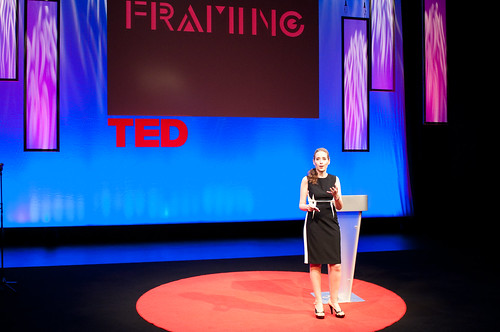2. Noreena has a very simple speaking type. She likes to tie in personal stories with the facts. She keeps her ideas simple enough that anyone could understand, but complex enough to touch each of us in a different way. Overall, she her technique is to 'pull on the heart strings' and not over do anything so she constantly has the attention of her listeners.
3. In regards to presentation style, Noreena doesn't really have one. She does not use any types of technology. She got up on stage, she dressed nicely and presented her speech as a hard-working citizen to the hard-working citizens. Noreena's presentation worked well with her technnique because the coherantly showed that she was as normal as everyone else trying to preach her ideas on normalicy.
4. From this video, it matters that society is giving too much credit to areas that don't need it. As people, we love the idea that someone has the slightest more knowledge in a certain area, we think it will give us the all telling key and every answer to our problems, when in truth it will not. To me makes me rethink where I want to go in life. I have always dreamed of being an Endocrinologist; a doctor that is an expert on diabetes. Now that people like Noreena are question experts, I may work my whole life for a job not even needed in the future. This ties into the education piece as saying that if experts are no longer in demand, then what is the point of a specialized education? If we don't want experts then why are we sending students through a ridiculous amount of college and post-grad degrees? Things like this may become pointless to education in the future and college degrees may be seldom.
 Simplicity.
Simplicity.(http://www.google.com/imgres?imgurl=http://farm5.static.flickr.com/4049/5146250862_6b190d34e0.jpg&imgrefurl=http://www.flickr.com/photos/conferencebasics/5146250218/&usg=__mxJoYozMqLAHK17JDYNfb2c5RxM=&h=332&w=500&sz=114&hl=en&start=0&sig2=_m3h_MHIScSbP51tOMolVg&zoom=1&tbnid=jH0r_6jeBkAIHM:&tbnh=127&tbnw=192&ei=1uy6TbuZDsTY0QGpucC8Bg&prev=/search%3Fq%3DNoreena%2BHertz%2BTed%26hl%3Den%26safe%3Dactive%26biw%3D1276%26bih%3D819%26gbv%3D2%26tbm%3Disch&itbs=1&iact=rc&dur=156&page=1&ndsp=22&ved=1t:429,r:6,s:0&tx=113&ty=46)


